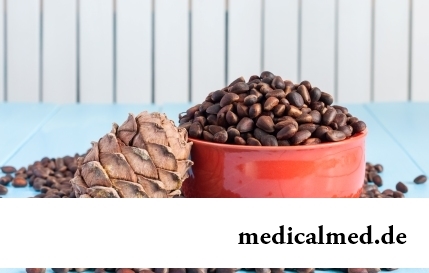





Cheese
Cheese is the dairy product received by means of special lactobacilli or abomasal enzymes which are necessary in the course of preparation for milk coagulation.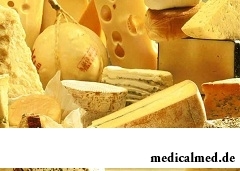
Classification of cheeses
The amount of cheeses is huge. Experts claim that in the world there are no two identical cheeses as there are no two identical people. But despite this variety, there is a classification of cheese which allows to refer the chosen product to this or that category and group.
Base for classification is the substance causing milk coagulation. If ferments are the cornerstone lactobacilli, then the cheese received as a result of their influence concerns to group of sour-milk cheeses. If preparations of cheese are the cornerstone the abomasal enzymes received from a stomach of ruminants, then the received cheese gets into group of abomasal cheeses. In some countries of the world cheese it is possible to call only the product received by coagulation by means of abomasal enzymes. All the rest has no right to bear a proud name of cheese.
Abomasal cheese, in turn, is also divided into several subgroups. The first subgroup – firm cheeses which are characterized by the high density and rather long term of maturing – up to 8 months. The second subgroup – soft cheeses, low density and of maturing up to 6 weeks. And the third subgroup – the brine cheeses relating to the most ancient and having not the biggest distribution. Feature of this subgroup is the technology of ripening which happens in a special brine for several days.
To understand complexity of classification of cheese, it is worth remembering that, as subgroups are also divided into separate types, and types are subdivided into grades. At the same time you should not forget also about distinctions in raw materials from which make cheese. Milk of various animals, preliminary pasteurization or absence that – all this brings additional accents in world classification of cheese.
Cheese with a mold
Independently there is a cheese with a mold which has specific taste and aroma. The legend says that in far times the young shepherd fell in love with the beautiful stranger. It left a pasture and followed for it, having forgotten the lunch in a limy cave. When he returned, found out that its cheese grew mouldy. Having tried the spoiled cheese would seem, he was surprised to its unusual taste and aroma. Quite so on a legend the recipe of cheese with a mold was born.
Cheese with a mold, as a rule, belongs to subgroup of soft cheeses. In the course of preparation of a syrodela sow a noble mold of the sort Penicillium in stvorozhenny weight, and special needles make air channels which help a mold to develop during maturing of cheese.
Advantage of cheese
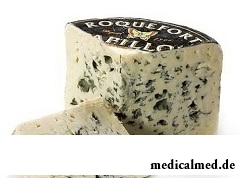 Many know about advantage of cheese, it is put in initial ingredients from which this product prepares. Cheese is vitamin-rich, microelements, animal protein and fats. Cheese increases hemoglobin level in blood, increases the level of arterial pressure, improves sight and various exchange processes. Cheese – a rich source of the calcium necessary for creation of bones and teeth.
Many know about advantage of cheese, it is put in initial ingredients from which this product prepares. Cheese is vitamin-rich, microelements, animal protein and fats. Cheese increases hemoglobin level in blood, increases the level of arterial pressure, improves sight and various exchange processes. Cheese – a rich source of the calcium necessary for creation of bones and teeth.
The advantage of cheese especially brightly reveals at its moderate use. At the reasonable use cheese can become caries prophylactic, improve mood and normalize a dream.
Cheese caloric content
Also you should not forget about the cheese caloric content which is quite high. It can reach 450 kcal on 100 grams of a product and directly depends on its fat content. The grade is fatter, the cheese caloric content is higher. So, taking it into account, this product should be used with care to people with excess body weight.
What cheese is dangerous by
It is necessary to remember that in some situations also harm from cheese can be shown. Some grades of cheese may contain the bacteria capable to cause listeriosis which is extremely dangerous to pregnant women and a fruit. The maximum risk of infection with listeriosis is the share of the cheeses made from not pasteurized milk. Considering their high cost and rather narrow distribution, about harm of cheese in this aspect, of course, it is possible to speak only conditionally.
Cheese can be also harmful to the people having a hypertension, ulcers of digestive tract and gastritises with a hyperoxemia.
Some supporters of refusal of milk and dairy products to whom also cheese concerns, claim that it contains quite large amount of opiatopodobny substances which are capable to cause dependence on cheese and to provoke the person to his uncontrollable, progressing consumption. This opinion has an evidence-based confirmation based on laboratory researches of milk.
More than 500 million dollars a year are spent for allergy medicine only in the USA. All of you still believe that the way to finally win against an allergy will be found?

Contrary to popular belief, the multiple sclerosis (MS) is not connected neither with sclerous changes of walls of vessels, nor about age...
Section: Articles about health
The business lady, the become mother, it is necessary to solve an array of problems. But of them is main: how to combine the beloved child and work? What traps trap the working mother and how she needs to behave?...
Section: Slideshow
The majority of gynecologic diseases prove three main signs, each of which speaks about need of a visit to the gynecologist. Certainly, it is possible to establish the exact diagnosis only after inspection, but on the basis of some signs it is possible to assume existence of this or that pathology. Let's consider symptoms of the female diseases which are found most often....
Section: Articles about health
The kid who was recently born is surrounded with love of adult family members and their cares without which the baby cannot exist....
Section: Articles about health
What they, women? Beautiful, gentle, passionate and at the same time windy, gusty, and nervous. And what is stranger: have all these qualities of the woman at the same time. But here only the mood their time sharply changes on completely opposite: in the morning...
Section: Articles about health
The winter swimming in open reservoirs called in our country by "winter swimming" – officially recognized sport and one of the most extreme ways of a hardening of an organism. This occupation has an old story and adherents in many countries. The international competitions in winter heats on open water, and every two years – the World Cup are annually held. Despite huge popularity and the proved advantage for health, winter swimming is still surrounded with hardy delusions. Ра...
Section: Articles about health
Transfusion of donor blood has almost century history. In spite of the fact that this procedure is quite usual for many people, itself п...
Section: Articles about health
Impossibility to conceive the child – a trouble of many Russian families. During quite long time was considered that main "culprits" of troubles such are women. Modern physicians claim that the situation is different: about a half of failures at...
Section: Articles about health
The pine is one of the most widespread plants of our woods. Its needles and pitch not without reason called by "gallipot" were since ancient times used for strengthening of protective forces of an organism, treatment of avitaminosis, anemia and many other diseases. In recent years wide popularity was gained by the national medicines prepared from pinecones. "Fruits" of a coniferous tree contain a huge amount of vitamins, biologically active agents, antioxidants, phytoncides and other useful to...
Section: Articles about health
All diseases from nerves – in this joke a big element of truth, are said by doctors. Constant stresses lead body to decrease in protective forces...
Section: Articles about health
Practice of use of table salt in the therapeutic purposes contains not one century. Applications which do by means of the fabric impregnated with saline solution are considered especially effective. They possess antibacterial and antiinflammatory эффек...
Section: Articles about health
Any person who faced a disease knows that treatment costs expensive. It belongs also to consultations of qualified specialists, and to the diagnostic procedures which are not included in the list of obligatory medical services. The question of cost of medicines is not so unambiguous: almost each drug is produced several producers at once, and the price of medicine can differ many times. In such situation there is a sense to understand in what differ from each other original environments...
Section: Articles about health
The varicosity has familiarly many, statistically, this disease more than a half of all adult population. As a rule, the varicosis affects preferential superficial vessels, and is shown by characteristic cosmetic defects. The deep vein thrombosis as this illness at the initial stages can imperceptibly proceed is represented much more dangerous, and in the started cases threatens with serious danger – thrombosis. This state, when the blood clot formed...
Section: Articles about health
One of the major chemical processes happening in a human body are oxidation reactions. They go with participation of fats...
Section: Articles about health
Stability of a hormonal background is one of the most important conditions of preservation of health of the woman. At the same time endocrine system – the thin device extremely sensitive to any external influences. Changes of an image жиз can become the reason of hormonal failure...
Section: Articles about health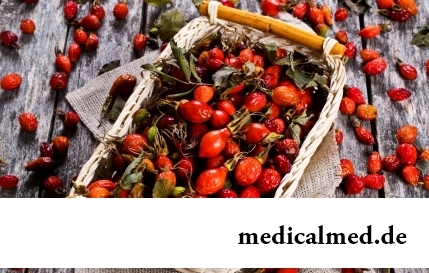
Dogrose – one of the most widespread adornment and medicinal plants growing practically in all territory of our country. To most of Russians it is a beautiful bush it is known, first of all, as a source of fruits, extremely vitamin-rich. However curative properties of a dogrose are not limited to it at all. About how still it is possible to use a plant in the medical purposes, we will tell today....
Section: Articles about health
Producers of milk mixes for children assure: mixes are ideally balanced and adapted for needs of babies. In a sluch...
Section: Articles about health
The person, as well as all other beings living on our planet feels weather changing. It is the normal meteosensitivity which is not causing to healthy people of special troubles. Meteodependence, on the contrary, is morbid condition, характеризующимс...
Section: Articles about health
The naturopathy sometimes moves as the new direction of medicine, something like fashionable hobby, and there is nothing farther from the truth. This most ancient direction, the word "naturopathy" is translated as "treatment by the nature", and, no doubt, treatment by natural gifts was the first and only, available to the person in ancient times. Despite modern achievements of medicine, the naturopathy remains urgent and today, anyway the person - a part of the nature, and природн...
Section: Articles about health
The fatigue, sleep debt, disturbances of food, bad mood, vagaries of the weather – all these circumstances badly are reflected in our vn...
Section: Articles about health
All like to sing. Small children with pleasure are engaged in a vocal, not especially thinking of hit in a melody. Adults most often hesitate, being afraid to show lack of talents in this area, and it is vain: singing is very useful for health....
Section: Articles about health
Scientists have no unambiguous opinion on a proximate cause of emergence of a carcinoma cutaneum today. Only the factors promoting development of this illness are precisely established. Treat them: long impact on skin of ultraviolet rays, radiation exposure, thermal injuries, injuries of skin by aggressive chemicals (pitches, acids, alkalis, etc.), genetic predisposition (existence of malignant new growths of skin in the family anamnesis), at...
Section: Articles about health
For many women the word "fat" sounds as a sentence. In aspiration to an ideal figure they try to exclude, first of all, from with...
Section: Articles about health
Each woman has preferences in the field of use of those goods which help us to look good, feel young and effective. Besides: selection process of favourite perfume, shampoo or decorative cosmetics already lifts a spirit...
Section: Articles about health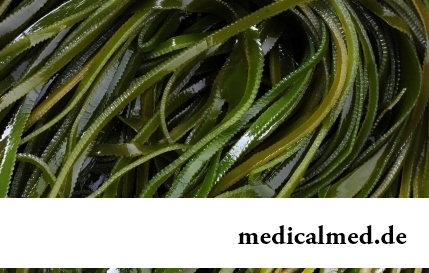
For residents of the countries of Southeast Asia various algas are an obligatory component of a daily diet. Their popularity is connected not only with high tastes, but also with numerous curative properties. Russians are a little familiar with products such that is distressing: algas are so useful that they should be eaten as often as possible. Let's get acquainted closer with useful properties of this seafood....
Section: Articles about health
